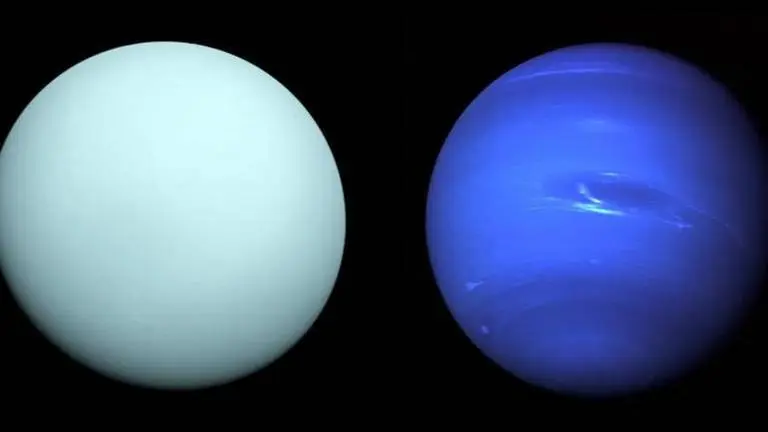Updated 1 February 2022 at 16:08 IST
UK study explains reasons behind Uranus and Neptune's colour variation mystery; Read
Uranus has a pale greenish shade whereas Neptune is dark blue coloured despite both the planets having similar atmospheres tropospheric temperature profiles.
- Science News
- 2 min read

Astronomers may finally know why the icy giants of our solar system, Uranus and Neptune, despite having similar characteristics appear in different shades. A recent study conducted by experts from the University of Oxford has revealed that the secret for Uranus looking paler than Neptune lies in the atmosphere of the former. As seen in the image above, Uranus can be seen in a pale greenish shade whereas Neptune is dark blue coloured despite both the planets having similar atmospheres with similar tropospheric temperature profiles.
Uranus' Aerosol-2 layer causes the colour difference
In their study published in the journal Earth and Planetary Astrophysics, the researchers noted that Uranus has a haze layer in their atmosphere, which they termed Aerosol-2. According to the experts, this layer is twice the thickness of Neptune's atmosphere and makes the light emerging from Uranus look a bit milky. The process is similar to blocking vibrant lights with tracing paper that dims and makes the colours look faded.
The experts also noted in their study that both the planets comprise hydrogen, helium and methane in their atmosphere along with other chemicals that form the haze at different altitudes. However, methane is thought to be the main ingredient of the haze as it breaks down when reacting with the ultraviolet radiation reaching the planet. The study says that the same element provides a blue appearance to both planets as methane allows the blue light to be reflected while trapping the red light.
"We now know this blueness comes from a combination of this higher abundance of gaseous methane, which has strong absorption bands in the infrared and red portion of the visible spectrum", the experts explained in their study as per Daily Mail. The details about the atmosphere of these icy giants were gathered using planetary models created using data from the Hubble Space Telescope, ground-based telescopes as well as the Voyager 2 spacecraft. It is these models that revealed Uranus to have a thicker atmosphere than Neptune, which resulted in a colour difference. Citing NASA scientist Naomi Rowe-Gurney's interview to New Scientist, Daily Mail reported him saying-
Advertisement
The authors state that future observations will help to answer remaining questions and I am sure that the James Webb Space Telescope will help with this during the planned observations of both planets within the first year of operations.
Image: NASA
Published By : Harsh Vardhan
Published On: 1 February 2022 at 16:08 IST
